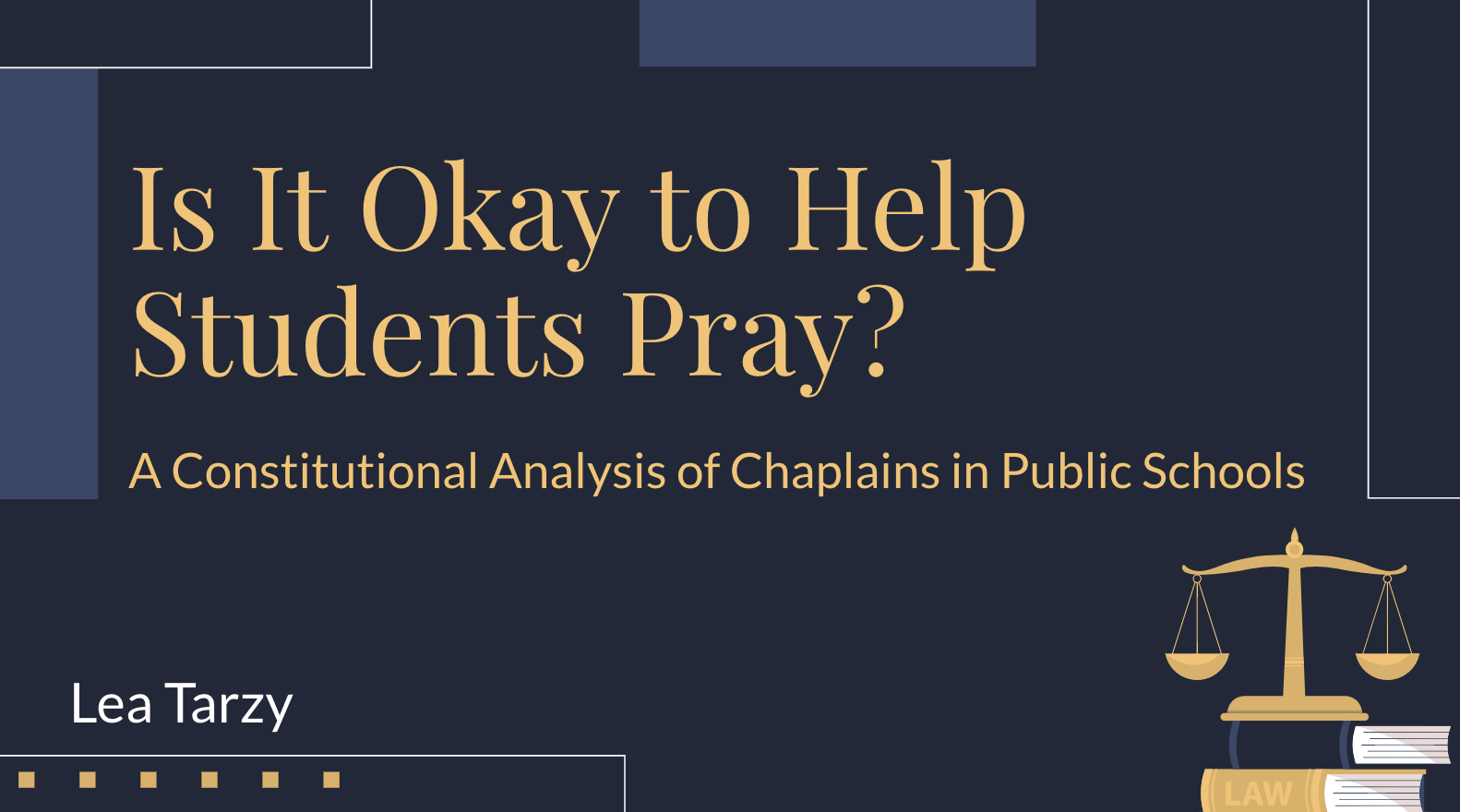
Is It Okay to Help Students Pray? A Constitutional Analysis of Chaplains in Public Schools
Author:
Lea Tarzy ’24
Co-Authors:
Faculty Mentor(s):
Brantley Gasaway, Religious Studies
Funding Source:
None
Abstract
“Congress shall make no law respecting an establishment of religion, or prohibiting the free exercise thereof.” Most analysts understand the First Amendment as requiring the separation of church and state while allowing for individual religious liberty. Though seemingly straightforward, the application of these principles is highly contested – especially in the context of public schools. The Supreme Court is often tasked with determining how to maintain a careful balance between avoiding religious establishments and protecting free exercise. The current posture of the Court and the convergence of recent rulings indicate an increasingly permissive attitude towards the commingling of religion and schools. The landmark cases of Kennedy v. Bremerton and Carson v. Makin in 2022 established a new era of the contemporary Court: protections for public school employees to exercise their religion on school grounds, and allowing the use of public funds for religious education. Since then, many states have proposed bills that allow religious symbols and practices in public schools, including requiring classrooms to display the Ten Commandments, mandating a daily moment of silence, and allowing teachers to pray during the school day. Perhaps most intriguing are policies permitting religious chaplains to serve as counselors in public schools. Already enacted in Texas, more than a dozen other states have recently proposed similar legislation. This presentation analyzes the constitutionality of these policies. I argue that allowing chaplains to work as counselors in public schools ultimately undermines the principles set forth in the Constitution.